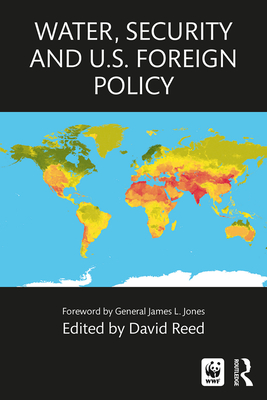Provides an analytical framework to help policy makers interpret the potential impacts and significance of drought and weather extremes as they intersect with other development challenges and difficult developmental trade-offs.
The prosperity and national security of the United States depend directly on the prosperity and stability of both partner and competing countries around the world. Today, U.S. interests are under rising pressure from water scarcity, extreme weather events and water-driven ecological change in key geographies of strategic interest to the U.S. Those water-driven stresses are undermining economic productivity, weakening governance systems and fraying social cohesion in scores of countries and, in the process, undermining the vitality of rural livelihoods, fostering local and ethnic conflicts, driving broad migratory movements and contributing to the growth of insurgencies and terrorist networks.
While the U.S. intelligence community has steadily expanded natural resource concerns in their global threat analyses, our overseas development assistance remains locked into provision of water and hygienic services rather than responding to the full sweep of global water challenges including governance and policy failures, growing conflicts over water and the need for promoting sustainable transboundary water arrangements in partner countries. A fundamental departure from the past is urgently needed.
Based on 18 case studies, Water, Security and U.S. Foreign Policy provides an analytical framework to help policy makers, scholars and researchers studying the intersection of U.S. foreign policy with the environment and sustainability issues, interpret the impacts of water-driven social disruptions on the stability of partner governments and U.S. interests abroad. The book also delivers specific recommendations to reorient U.S. development and diplomatic engagements that can forestall and prevent social disruptions and ensuing threats to U.S. prosperity and national security.
Get Water, Security and U.S. Foreign Policy by at the best price and quality guranteed only at Werezi Africa largest book ecommerce store. The book was published by Taylor & Francis Ltd and it has pages. Enjoy Shopping Best Offers & Deals on books Online from Werezi - Receive at your doorstep - Fast Delivery - Secure mode of Payment
 Jacket, Women
Jacket, Women
 Woolend Jacket
Woolend Jacket
 Western denim
Western denim
 Mini Dresss
Mini Dresss
 Jacket, Women
Jacket, Women
 Woolend Jacket
Woolend Jacket
 Western denim
Western denim
 Mini Dresss
Mini Dresss
 Jacket, Women
Jacket, Women
 Woolend Jacket
Woolend Jacket
 Western denim
Western denim
 Mini Dresss
Mini Dresss
 Jacket, Women
Jacket, Women
 Woolend Jacket
Woolend Jacket
 Western denim
Western denim
 Mini Dresss
Mini Dresss
 Jacket, Women
Jacket, Women
 Woolend Jacket
Woolend Jacket
 Western denim
Western denim
 Mini Dresss
Mini Dresss






























































